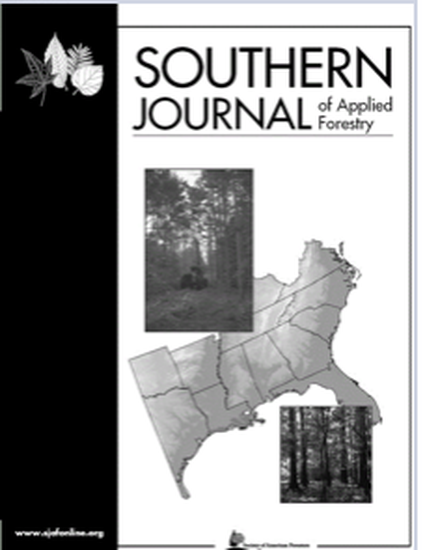
Article
Effects of Pine Conversion on Food Plants of Northern Bobwhite Quail, Eastern Wild Turkey, and White-Tailed Deer in the Virginia Piedmont
Southern Journal of Applied Forestry
(1986)
Abstract
Vegetation surveys were conducted in a series of upland stands to discern changes in the abundance of food plants for northern bobwhite quail, eastern wild turkey, and white-tailed deer following conversion from 2nd-growth hardwood and pine-hardwood forest to loblolly pine plantations in the central Piedmont of Virginia. Cover of principal food plants in second-growth native forests was negligible, but mast-producing capability was more than adequate for good deer and turkey habitat. Upon conversion there was a rapid increase in available food plants, but a loss of mast. Cover of principal food plants for bobwhite quail and wild turkey was highest in 1-yr-old plantations; by 3 yr, plantations were deficient in seed-producing plants for these species. Deer browse was adequate in plantations up to 9 yr, but declined rapidly following crown closure at 10-15 yr. Between crown closure and the first commercial thinning (about 20 yr), plantations were of negligible food value to the three wildlife species. Results suggest that optimum conditions for bobwhite are provided by a preponderance of young plantations while those for deer and turkey are supplied by a mix of second-growth forests and various-aged pine plantations.
Disciplines
Publication Date
1986
DOI
https://doi.org/10.1093/sjaf/10.1.47
Citation Information
Terry L. Sharik. "Effects of Pine Conversion on Food Plants of Northern Bobwhite Quail, Eastern Wild Turkey, and White-Tailed Deer in the Virginia Piedmont" Southern Journal of Applied Forestry Vol. 10 Iss. 1 (1986) p. 47 - 52 Available at: http://works.bepress.com/terry_sharik/121/
